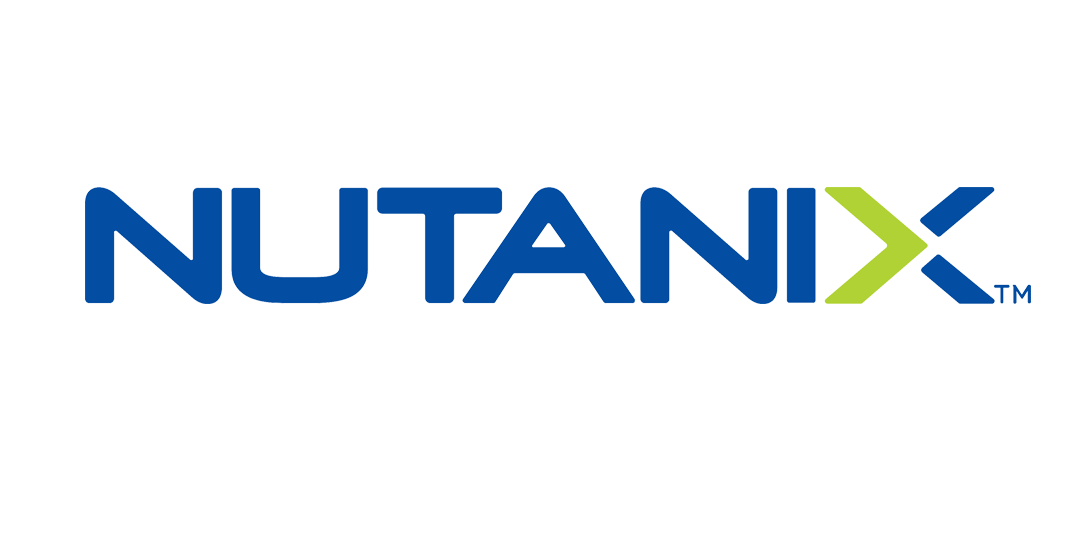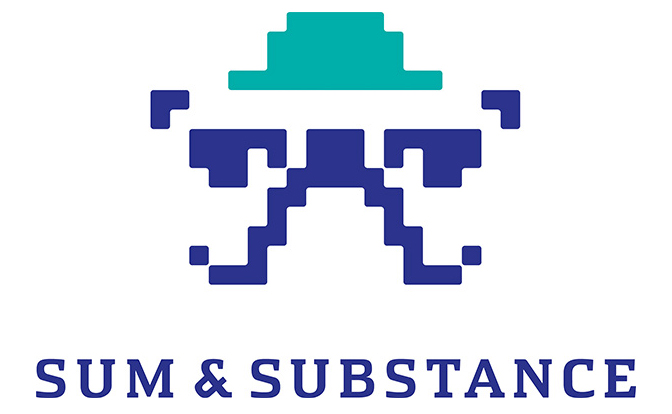Published
- 06:00 am

Nutanix (NASDAQ: NTNX), a leader in hybrid and multicloud computing, today announced the release of the first cloud agnostic multi-database management solution. Era 2.0 extends the Nutanix database management solution across clouds and clusters to simplify operations, with increased scale and reduced costs for IT and database teams. Additionally, Nutanix announced expanded support for Postgres and SAP HANA as well as a joint solution, powered by Era 2.0, with HCL, a leading global technology company.
Era enables IT teams to deliver Database as a Service by bringing one-click simplicity and invisible operations to database provisioning and lifecycle management. It’s a multi-database solution with support for Oracle, Microsoft SQL Server, MySQL, and MariaDB, in addition to Postgres and SAP HANA.
“Companies are increasingly looking for technology solutions to support their hybrid and multicloud strategies but, while some vendors deliver application mobility, we haven’t seen a lot of innovation when it comes to multicloud database management,” said Bala Kuchibhotla, SVP & General Manager, Nutanix Era, Databases and Business Critical Apps at Nutanix. “Nutanix Era now delivers on our vision to provide a cloud agnostic multi-database management solution to truly unlock the promise of hybrid and multicloud.”
“At HCL, we help our customers to accelerate their data and infrastructure modernisation journey with a secure, scalable, and cloud-ready database as a service. Our industry acclaimed services powered by the Nutanix Era & HCI platform will provide enterprises with a world-class automated database platform,” says Kalyan Kumar, Corporate Vice President and CTO, IT Services, HCL Technologies. “We have a long standing relationship with Nutanix, and, with SKALE DB, we will move forward to help our customers optimise their data resources and support their digital initiatives.”
Era delivers simplified database management by combining the scalability and performance of Nutanix’s HCI software with the flexibility of cloud-ready database services. With this announcement, the company delivers:
Simplified Database Management Across Distributed Clusters and Clouds
Nutanix Era 2.0 enables customers to provision and manage databases across multiple clouds with consistent tooling, standards, and security policies, giving them the flexibility to choose the right cloud for each database to increase agility and minimise cost. Era 2.0 also delivers operational simplicity across multiple distributed clusters and datacentres delivering significant scale and with 1-click provisioning, cloning, and patching. In addition to simplifying operation and minimising costs with seamless data mobility across clouds, Era 2.0 enables new use cases including: leveraging public cloud for capacity bursting, dev/test, capacity remediation, and optimising databases performance remotely.
Support for SAP HANA at Scale
Nutanix announced Era’s capabilities are extended to one of the leading relational database engines, SAP HANA. With this, customers can enjoy 1-click management experience for their SAP HANA deployments. Nutanix was one of the first HCI platforms to be certified for SAP HANA scale-up and most recently scale-out, simplifying deployments for SAP business applications and SAP data warehousing solutions on SAP HANA.
24x7 Support of PostgreSQL on Nutanix
In addition, Nutanix announced extended 24/7 support for Postgres to enable customers’ mission critical deployments. Unlike competitors, this includes an end-to-end support experience for the Postgres database engine in addition to the infrastructure platform and Era management services - all through the Nutanix team - resulting in more rapid time to resolution.
Fully Managed Database as a Service Solution with HCL Technologies
For customers seeking a fully managed solution, Nutanix partnered with leading global technology company HCL, to create a joint offering powered by Era 2.0. SKALE DB, a joint offering by HCL and Nutanix, enables enterprises to accelerate the data modernisation with a secure and scalable Database as a Service (DBaaS) offering.
“Securing, protecting and managing information throughout its lifecycle takes time and distracts our customers from driving real value from that information for their businesses," said Dom Poloniecki, General Manager, Sales, Western Europe and Sub-Saharan Africa at Nutanix. He continued: “Nutanix Era reduces the overhead of the administration of data and databases through automation, enabling our customers to build once and deploy anywhere across multiple clouds and datacentres, giving time and budget back so they can focus on innovating and driving business value from the stored information.”
“With data sprawl where it is today, database management has gotten more complex than ever before. Organisations of all sizes are looking for solutions to simplify database operations, from initial deployment to ongoing management and maintenance,” said Mike Leone, Senior Analyst, ESG. “Era 2.0 delivers a cloud agnostic solution that can simplify database operations and help customers unlock the much needed value of data mobility.”
Era 2.0 and SKALE DB are currently available to customers. For more information on Era 2.0 or to take a Test Drive visit here.
Related News
- 05:00 am

INSTANDA, the leading customer and policy management platform for the insurance industry, has successfully launched its first African insurance market product on its platform with newly-onboarded client, Standard Bank South Africa.
INSTANDA has worked closely with Standard Bank Insurance to enable them to launch a new commercial cyber insurance product. After just one week of training, Standard Bank Insurance started working on the product themselves and were able to test and take it to market in under six months.
The product launch signals INSTANDA’s continued global expansion and supports its mission to drive forward the digital transformation of the whole insurance industry globally, following its $19.5m Series A funding round in March this year, and the announcement of a series of European partnerships earlier this summer. INSTANDA is headquartered in the UK with offices in the USA, Chile, Japan and Australia, and operates in 13 countries and with over 60 clients across all insurance lines and distribution channels.
Standard Bank is a financial institution that offers banking and financial services to individuals, businesses, institutions and corporations in Africa and abroad. In looking for ways to improve the speed of launching a range of insurance and financial products in its own marketplace, Standard Bank Insurance selected INSTANDA’s no code, cloud-based platform to enable better agility and autonomy in product management and digital distribution channels.
Tim Hardcastle, CEO & Founder of INSTANDA, comments: “Not only are we excited to be launching into yet another region this year, we are ecstatic that it is with a leading financial services firm and provider of bancassurance, focused on wealth management and financial wellbeing. Their ambitions from pursuing new markets at scale needed a technology partner who was able to provide a tailored solution to their needs. It is another significant step forward as we continue on our journey to bring agility and digital transformation to the insurance industry globally.“
Leon Vermaak, Global Head of Standard Bank Insurance, noted: “We were drawn to INSTANDA’s ability to launch products to market quickly and in a cost-effective way. For us, INSTANDA was the obvious choice as an agile solution, which will enable us to increase our ability to quickly change rates, product rules, user experience and address market demands. We expect a broader ‘product per customer’ penetration for existing Standard Bank customers, and more new customers over time as the product portfolio grows.”
Related News
- 03:00 am

There are many different arms of fintech being developed specifically for businesses and investment companies, but virtual reality is something that has existed for a while in different formats, and is being adopted into the investment space through innovate software. Interested to find out more? Here’s some key information about virtual reality currently, and how it ties in successfully with the property investment world.
Origins of VR
Virtual reality has always been a dream for many, existing alongside the flying car in science fiction for decades at this point, but only in the past few years has the technology become an achievable, mainstream product. With the Facebook-owned Oculus pioneering a new era of headsets that solved issues from screen resolution to head tracking and motion sickness, VR is increasingly moving out of its niche origins in video games, and into aspects of everything from fintech, to training for surgeons and even space exploration.
Interested in the technology itself? Here are some of the current consumer grade options on the market:
- Phone-based virtual reality – The cheapest and most accessible version of VR that you can get your hands on at the moment is mobile-phone based, using the high-quality panel that you carry around in your pocket at all times and simply building a shell around it that you can slip your phone in and out of when you want to experience VR. This is the best option for those that want to demonstrate the technology without investing a serious amount of money, and you can even craft a makeshift headset out of cardboard if you just want to get a taste for what it’s all about. Of course, you’re not going to get the full experience this way, but it’s a good starting point.
- High end VR rigs – Some of the more high-fidelity VR headsets can be costly, at least on a consumer level, and can also require a good spec PC rig and some setup to get working. Products like the Valve Index and Oculus’ flagship Rift S headset are currently some of the industry-leading trendsetters.
- Cord cutting alternatives – The form of VR that will likely be the most mainstream in the years to come is cord-free headsets and controllers, that don’t need external devices/PCs to run and can be simply set up by anyone that wants to experience escapism. Oculus have recently released their ‘Quest 2’ headset, a brilliant middle ground between affordability and quality that will almost certainly be adopted by those wanting to integrate simple VR tools into their work.
The ‘virtual viewing’ process
An efficient and cost-effective solution for foreign investors looking to view a property in the UK without having to travel all the way there, property investment company RWinvest are one of the few pioneering the ‘virtual viewing’ process in VR. Alongside doing screenshares with clients, showing them infographics of the area they’re interested in, statistics, and projections over video call, investment consultants are able to use virtual reality headsets in order to give remote investors an immersive, realistic view of what their property will look like from the inside out. Not only is this ideal for those that struggle to visualise blueprints and floor plans, but with many of the best property developments nowadays being off-plan (meaning they’re still in their construction phases), VR gives a window into the future.
No headset? No problem. The term virtual reality doesn’t necessarily refer to the headset and goggles. Many of the CGIs and immersive 3D builds are available as compact, transferrable files that can also be viewed through a smartphone, using the gyroscope to allow the user to move their phone around and explore in a virtual space.
Socially-distant investing – Of course, prior to the pandemic, the primary use for this ‘virtual viewing’ technology was to appeal to international investors, giving them the opportunity to look at a development they’re interested in from afar. However, it has also proven to be an invaluable tool over the past few months, with the ongoing pandemic restricted many people around the world from travelling to visit prospective investment sites. Despite uncertainty from some entrepreneurs and investors due to the pandemic, the property market in the UK is continuing to thrive, and so this fintech innovation will continue to be relied upon and innovated upon.
Related News
- 07:00 am

Despite this festive period promising to be the most online ever, fears of failure threaten a fifth (21%) of online retailers. A new study from London-based online payment company, Checkout.com, shows one in five (19%) online merchants don’t think their e-commerce offering will cope with this year’s online festive sales rush, rising to 22% for smaller retailers*.
Those retailers that don’t sort their ecommerce and digital payments infrastructure in time could miss out on part of the £10.5 billion estimated to be spent, with the average person expecting to spend £278 on the digital high street this Christmas and Black Friday with clothes, food and drink and books set to be the most purchased items.
A quarter (26%) of online retailers expect to take less revenue than last year during this Black Friday. But despite retailers’ fears of consumers reining in spending, 14% of shoppers intend to spend £500 or more over the festive period - presenting a great opportunity for retailers to recoup sales lost from the first half of the year.
Misconceptions between retailers and consumers
Amidst rolling local lockdowns the pandemic has led more people online, ultimately changing retailers customer demographics. This misconception between what retailers think consumers want, and what consumers really want means shoppers could take their money to savvier online retailers.
One in 10 (9%) consumers intend to pay using a mobile wallet like Apple Pay when making an online purchase during the festive period sales. Despite this, 40% of online retailers say the payment infrastructure they have in place does not allow them to accept different alternative payment methods like Apple Pay, despite customer preferences.
Bradley Riss, Chief Commercial Officer and retail expert at Checkout.com said:
“The upcoming Christmas period, which looks set to be the most online quarter ever, will be the real test on the digital high street. Convenience is king and that’s as true of payment systems as it is online deliveries. It’s a busy time of year for consumers, and they won’t wait for archaic ecommerce infrastructure or limited payment choices when a competitor is only a few clicks away.
Despite this year promising to be the most online festive period, mobile commerce could slow with fewer people commuting and moving around, instead opting to make their purchases on a desktop or tablet. That provides a unique opportunity for retailers.
But our research reveals that three in 10 (30%) retailers say the pandemic has meant updating their payments infrastructure has taken a back seat. At such a crucial time for retailers, it’s essential they find the right solutions to make the most out of this period. For those that don’t, they may find their consumers shopping elsewhere this Christmas.”
___________________
256 B2C retailers with an online presence were surveyed by Opinium between 30th September – 5th October 2020. 2,003 UK adults were surveyed by Opinium between 2nd October – 6th October 2020.
*smaller retailers are defined by a business of 1-9 employees
Related News
- 06:00 am

Red Hat, Inc., the world's leading provider of open source solutions, announced several upgrades to its enterprise automation platform, including the latest version of Red Hat Ansible Automation Platform with new Red Hat Certified Ansible Content Collections, automation services catalog and private Automation Hub.
In a related announcement, Red Hat previewed an integration between Red Hat Advanced Cluster Management and Ansible Automation Platform, bridging the divide between traditional IT environments and cloud native, container-based solutions. This integration unites two of Red Hat's industry-leading platforms, Red Hat OpenShift and Ansible Automation Platform, to drive automation across the open hybrid cloud.
With dynamic global challenges requiring rapid adjustments in operational domains and environments, automation projects have helped mitigate the complexity that these conditions produced and provides faster responses to changing business requirements. Bringing together teams for improved collaboration, these new services and offerings ultimately connect business managers with automation leaders to better align automation strategies with the needs of the business and expand how automation can be invoked.
Additional Certified Content Collections: in-demand automation code made more readily available
Introduced in 2019, Ansible Content Collections provide a standardized method for automation developers to build and package automation content, and for implementers to consume them in a portable and scalable way. Ansible Content Collections bring guardrails and structure to automation content, packaging Collections into categories based on automation domain or platform. Collections delivered in Ansible Automation Hub are certified by the Ansible partner network and are tested, validated and fully supported for enterprise-class production environments.
The newest version of Ansible Automation Platform is slated to include newly certified Ansible Content Collections for Red Hat OpenShift, Kubernetes Core and VMware vSphere REST API. These Collections showcase Red Hat’s continued commitment to automating cloud and Kubernetes platforms for modern IT. Hybrid cloud use cases have pressed forward, whether it’s utilizing native Kubernetes or Red Hat OpenShift, these Certified Content Collections enable automation for various container management systems.
With the addition of these new Collections, there are now more than 55 Ansible Content Collections available from Red Hat and its partners in Automation Hub; you can view a full list of supported and certified Ansible Content Collections.
Building internal automation content communities with private Automation Hub
Ansible Automation Hub is a managed cloud service to provide easy access to certified Ansible content for customers, maintained by Red Hat and our partners. As automation efforts expand across organizations, individual teams often look to integrate automation as part of their overall IT strategy, while IT leaders want the ability to ensure security and manageability of unsupported content. Private Automation Hub delivers a central location for internal automation communities to manage and curate their Ansible content privately, using trusted content from Red Hat, its partners and internal developers.
Private Automation Hub enables content creators as part of enterprises to collaborate and publish trusted, verified resources from a single source, helping to streamline Ansible code within an organization and create a knowledge guide for automation newcomers. More advanced teams can still use this content as a basis for automation, while the organization as a whole gains the ability to manage and control the lifecycle of Ansible automation content as needs scale across the hybrid cloud.
Driving customized automation for the open hybrid cloud
Announced at Red Hat Summit 2020, the automation services catalog makes enterprise-specific, pre-approved, curated automation available to infrastructure and application teams, as well as to business users. This capability helps provide IT administrators and security operations teams with greater visibility over what is being automated while not slowing down organization-wide automation practices. With the addition of the connector technology in the automation services catalog, customers can now bring the automation services catalog directly and more securely to their own private infrastructure, enhancing control over what automation practices are being used.
The connector technology also enables organizations to maintain business-specific controls and compliance mechanisms, while developers can still access the information they need, faster. New integrations for Information Technology Service Management (ITSM) also extends the automation services catalog to platforms like BMC Remedy and ServiceNow, reducing friction in proactively completing ITSM rulesets and standards tasks. This can help drive greater efficiency for teams that are seeking to make Ansible automation a key part of their overall business strategy and not simply a siloed IT component.
Automation as an enterprise imperative
Red Hat acquired Ansible in 2015, and since then, the world of IT has changed.
Organizations now understand that automation can provide faster responses to changing business requirements, and provides the capability to automate more aspects of a business as a driver for future plans. According to a 2020 Forrester report commissioned by Red Hat, automation is a necessity; three out of five respondents reported automation as one of their firms’ top initiatives, even amid competing priorities like adoption of cloud, containers and security management. This imperative for automation has fueled momentum around Ansible, making it a leader in infrastructure automation platforms today:
- Organizations across industries are running Ansible Automation Platform to manage global operations, freeing up IT teams to focus on digital transformation and business-level innovations.
- IT automation knowledge is now frequently cited amongst the most in-demand job skills.
Ansible Automation Platform enables customers to move away from do-it-yourself, siloed approaches and to improve ROI. These customers are automating millions of nodes with Ansible as part of a modernization of management approach.
Joe Fitzgerald, vice president, Management, Red Hat, said: “Ansible has evolved into a defacto standard for automation and has become one of the top 10 open source projects in the world. Red Hat has built an automation platform for enterprises to more easily access, consume and share Ansible content to significantly reduce the time-to-automation. As customers continue down the path of digital transformation, these pre-integrated resources can address common use cases while advancing the management and innovation of traditional and cloud-native infrastructure.”
Michael McCarthy, Delivery Architect, Production Engineering Group, Gamesys. added: “We began our automation journey with the community edition of Ansible, but due to the size of our estate, we quickly upgraded to Ansible Automation Platform for its management capabilities. We progressed from simply automating our infrastructure deployments to incorporating network, OpenStack and Kubernetes processes as well. Next, we’re looking to make our new automation projects even faster, with Ansible Content Collections serving as an ideal solution to help us achieve just that. Ansible Automation Platform has clearly been a game-changer for us.”
Availability
The latest innovations available in Red Hat Ansible Automation Platform, including Ansible Content Collections, and private Automation Hub, are available now on cloud.redhat.com. The connector technology in the automation services catalog is now available in technology preview. We plan to release new Collections on a rolling basis.
Related News

Daniel Carpenter
Head of Regulation at Meritsoft (a Cognizant company)
There has been a steady stream of transaction tax announcements in the last ten years. see more
- 08:00 am

Advapay, a digital core banking platform for fintechs, and Sumsub, an identity verification platform that covers KYC/KYB/AML needs, have partnered to deliver a smart KYC and AML solution to digital banks and fintechs.
Advapay is an Estonian technology and fintech advisory company that facilitates regulated payment service providers with all the necessary fintech solutions. Advapay’s services cover everything from the professional fintech advisory and licensing services to the provision and implementation of the necessary customised IT infrastructure — a back-to-front digital core banking platform. The integration with Sumsub will broaden the scope of Advapay’s core banking platform and provide automated onboarding and KYC/AML functionalities. From now on, this new integration will be available and accessible for all Advapay’s clients from the list of ready-to-use integrations.
Identity verification is a mandatory requirement for all fintech businesses and is still a point of confusion for many of them. Sumsub is going to benefit all the businesses that use Advapay with an effortless and people-friendly identity verification solution powered with face recognition and matching technology for biometric identity proofing and liveness check, document screening and background checks. The company will ensure the verification of 6500+ types of local documents from 220+ countries and territories. It will help Advapay’s fintech clients to comply with regulators and their requirements, provide a 100% digital experience for their end-users and cut the time spent on identity verification to just a couple of minutes.
“We are pleased to announce that we have formed a strategic partnership with Sumsub,” says Gustav Korobov, Senior Sales Executive at Advapay. “Sumsub’s solution will enable us to fully automate AML/KYC processes for our clients, providing a superior level of security. This means that we will embrace an entirely new value proposition and recreate exceptional customer experience.”
“We are really excited to work with Advapay and by connecting our solution to their smart banking ecosystem to help their clients achieve effortless and secure identity verification,” says Jacob Sever, Co-founder of Sumsub. “From our experience, we can say that Advapay is a committed and reliable partner in providing a highly configurable Core Banking platform. It is the partner of choice to deliver end-to-end and fast-to-market solutions.”
Related News
- 08:00 am

Objectway, a leader in the Digital Wealth & Asset Management software, announced they have ranked #77 on the 2020 IDC FinTech Rankings.
This is the sixth consecutive year Objectway have appeared on this prestigious list.
The Fortune 500-style annual ranking categorises and evaluates the top global providers of financial technology based on 2019 calendar year revenues from financial institutions.
The IDC FinTech Rankings serve as a critical tool for financial firms to use during strategic planning and to consider investments in third party solutions.
The featured providers supply the technological backbone of the financial services industry, a sector in which IDC Financial Insights forecasts worldwide spending on IT across the globe to exceed $577 billion (USD) by 2024.
“We are proud to once again be included in the prestigious IDC FinTech Rankings,” stated Luigi Marciano, Objectway Group CEO and Founder. “Our growth as a company is driven by the engagement to seize the opportunities, deal with today and prepare our clients for tomorrow challenges by automating, improving and digitising the way to work.”
“IDC is honored to recognise the technology providers that appear on the 17th annual FinTech Rankings,” said Marc DeCastro, Research Director at IDC Financial Insights. “These are the companies that have shown commitment to the financial services institutions and their appearance on the list is a testament to that dedication.”
To view the list in its entirety, please visit HERE.
Related News
- 05:00 am

Kneip, a global leader in fund data management, is today announcing that it has appointed Nick Yeates as Chief Financial Officer. Kneip has ambitious plans to grow globally. To achieve this, Kneip is making significant hires in key areas, with Enrique Sacau appointed as CEO in July and now Nick Yeates as CFO.
Prior to his new role at Kneip, Nick was the Group CFO at Akinova, a ground-breaking electronic marketplace for insurance risk. Before, he was the Finance Director for Xchanging's Xuber insurance software division. He has also held senior positions in other large corporations, including Accenture and BT.
Nick will be based in Kneip’s London office but spend much of his time in its Luxembourg headquarters.
Commenting on his appointment, Nick Yeates says: “I’m thrilled to be joining Kneip at such an exciting time for the company. The Kneip name has been well respected across the industry for many years, and as it looks to increase its offerings and accelerate growth, this is a brilliant opportunity for a CFO to create significant value.”
Nick is replacing Ken Sommer, who has been Kneip’s Group CFO since June 2018. Ken has played a key role in Kneip’s development over the past two years and, although he has chosen to go into semi-retirement, will continue to have an active role in the company by remaining engaged as an adviser.
CEO of Kneip Enrique Sacau says: “I’m delighted that Nick is joining Kneip as CFO. He brings a wealth of commercial experience in the financial services sector, which will be key to Kneip and the plans we are putting in place for 2021 and beyond. Our key priority is growth and of course finance will play a fundamental role in that.
“I’d also like to thank Ken for the role he has played in Kneip’s success so far. Although I only joined a few months ago, Ken has become a trusted colleague, so I’m pleased that he will continue to play a role at Kneip, whilst getting to enjoy more time with his family.”
Fund and asset managers use the Kneip platform to deliver the most accurate data possible, more quickly than ever before, to their investors. Kneip efficiently collects, cleans and disseminates enormous quantities of data every second of every day, ensuring investors stay in the know, and fund managers stay compliant.
Related News

Stephan Wolf
CEO at Global LEI Foundation
In a battle for significance, no other public facing business document can match the annual financial report. see more









